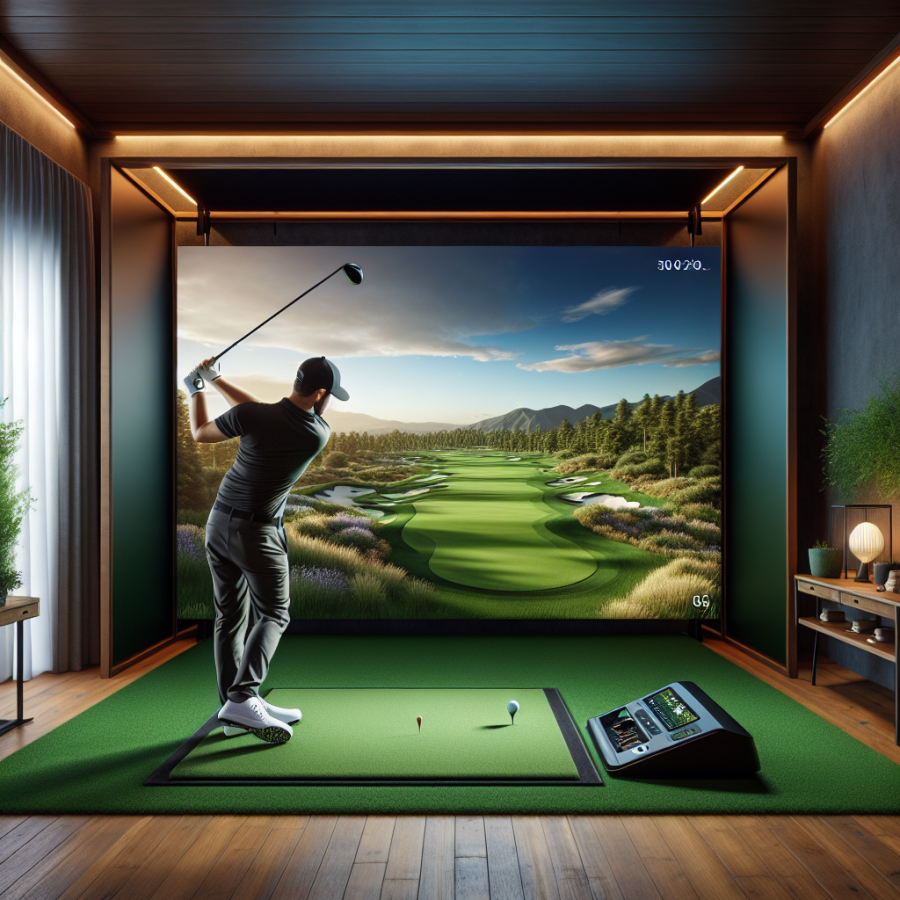Understanding the Role of Advanced Sensor Technology in Golf Simulators
While a variety of technologies contribute to making golf simulators realistic and accurate, few elements play as crucial a role as advanced sensor technology does. These smart sensors enable these virtual training courses to accurately replicate the real-world golfing experience.
A key factor that determines the accuracy and usefulness of a golf simulator is its ability to track and analyze the golfer's swing and the ball’s flight accurately. This is where the sensor technology comes into play. There are primarily two types of sensors used in golf simulators: photometric cameras and Doppler radar systems.
Photometric cameras capture high-speed images of the clubhead and the ball at the point of impact. These cameras record various data points, such as clubhead speed, attack angle, club path, and face angle. With this information, the simulator software can accurately generate the trajectory and behavior of the ball in the virtual environment.
Doppler radar systems, on the other hand, use radio waves to track the movements of the ball. The radar emits waves that bounce off moving objects (in this case, the golf ball), and return to the radar. The change in the frequency of these waves helps in determining the ball's speed, spin, and trajectory.
The application of advanced sensor technology doesn’t stop at tracking the ball's movement. The future of golf simulators will also see the implementation of sensors designed to track player’s movements. These systems could provide additional data on a golfer's stance, body alignment, and other physical determinants of a swing. This would mean a simulator can provide even more comprehensive feedback, helping golfers to refine every aspect of their swing.
The use of artificial intelligence (AI) and machine learning (ML) with these sensor systems will further enhance the accuracy and functionality of golf simulators. AI and ML could help identify patterns in a player’s swings, suggest improvements, then adjust the simulator parameters to create challenging scenarios for the player, thereby nurturing their skills and strategies.
In order for golf simulators to provide accurate shots and realistic gameplay, they need to analyze a vast amount of data quickly and accurately. This is only possible with advanced sensor technology that can capture the exact motions of both the golfer and the ball. By coupling these systems with powerful software, golf simulators of today can produce an almost lifelike golfing experience.
In conclusion, advanced sensor technology is no less than the backbone of modern golf simulators.
Read also:
The Precision of Golf Simulators: How Accurate Are They Really?"
Decoding the Realism in Golf Simulators: The Integration of 3D Graphics and Physics Algorithms
Understanding the convergence of 3D graphics and physics algorithms is key to fully appreciating the technology that underpins golf simulators. The realism these simulators offer hinges on the seamless integration of these two key technology areas. They come together to create the hyper-realistic golfing environments that enable users to refine their skills and experience the twists and turns of internationally renowned golf courses from the comfort of their home or office.
To begin with, 3D graphics are at the heart of the lifelike visual experience golf simulators deliver. Sophisticated software leverages advanced 3D rendering techniques to create an immersive, visually rich golfing environment. From the texture of the greens to the position of the trees and the level of detail visible in the surrounding scenery, everything is designed to be as realistic as possible. There's a meticulous focus on recreating the aesthetics of the golf courses with the utmost accuracy to ensure a close mimic of the real-world golfing experience.
Some high-end golf simulators even integrate 4K resolution capability, enhancing the quality of imagery and level of detail. Such technology provides a more immersive experience, allowing golfers to enjoy a nearly exact replica of their favorite golf course. These intense graphics require a high-performance computer graphics card to deliver the precision and speed necessary for rendering the complex 3D environment in real-time.
In addition to 3D graphics, physics algorithms play an equally crucial role in the authenticity of golf simulators. While the graphics deliver the visual realism, physics algorithms ensure that the golfing experience itself accurately mirrors the real thing. These algorithms calculate a variety of factors including swing speed, detailed ball flight physics including spin and trajectory, shot direction, and various environmental factors such as wind speed and direction. They essentially process the player's swing details to calculate what the result of that swing would be in real life.
This combination of rich 3D graphics and advanced physics algorithms form the cornerstone of golf simulator technology, offering ‘as close as it gets’ experience to a real game. They work hand in hand to establish a feedback loop wherein the golfer's swing is tracked, analyzed, and a realistic projectile of the golf ball is calculated and rendered on the screen.
For instance, when a player makes a swing, the simulator’s high-speed cameras or infrared sensors capture the swing data, documenting parameters like club face angle, swing speed, and path. This raw data is then processed by the physics algorithms to predict ball flight characteristics.




